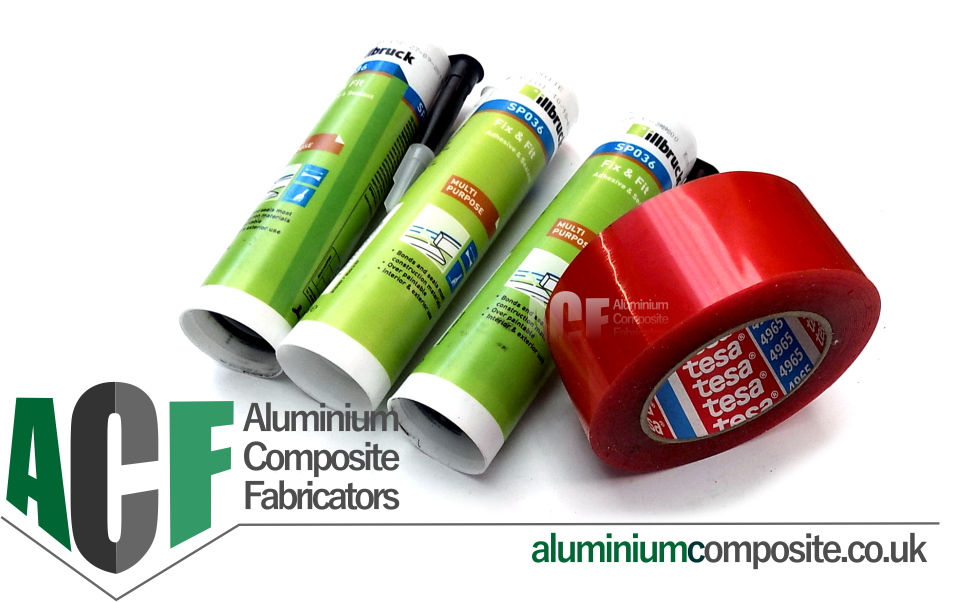Main menu
Aluminium composite. (ACM)
Use this list to explore more.
Aluminium composite bonding.
Adhering ACM.
Bonding aluminium composites is
a much more straight forward
undertaking than it used to be.
Thanks to advances in adhesive
technology ACM can now be
securely fixed using standard
off the shelf bonding systems.
Key; always.
When bonding aluminium composite with anything other than double sided VHB tape keying is essential. The term "keying" simply means roughening the surfaces to be bonded. Why is called "keying"; because it's key to getting the right results.
Sanding the parts of composite you want to bond gives a nice texture for any adhesive to flow into and grab hold of. If you don't key then your adhesive simply sits on top of the ACM rather than gripping hold of it.
When the composite parts are roughened (keyed) you will need to clean off any dust & debris before applying adhesives; this is best done with an IPA wipe. Alcohol based cleaners are great because any residue will evaporate away harmlessly.
Adhesives
So what do we actually bond our aluminium composite with? The ideal option is a modern 3d polymer based cartridge adhesive. On this page we are showing a product manufactured by Illbruck but similar 3D polymer products should deliver the same results. Standard silicone is not an adhesive and should never be used for a bonding application; it will fail at some point.
Very High Bond tapes are also a good way to bond aluminium composite, it pays to use plenty of tape as total surface area of bond is an important consideration.
Two part structural
There are a variety of two part structural adhesives based on PMMA chemistry. In our experience these adhesives just can't be relied upon. In cold or damp conditions PMMA adhesives have often failed; that's why we refuse to use these adhesives anymore.
If you do want to use a PMMA adhesive then keying is critical, follow the same process described earlier in this page. If you are using highly polished composites remember that PMMA normally cures in an exothermic reaction. This means the glue gets hot when it cures, this can cause distortion which polished ACM surfaces make horribly visible. It's always a good idea to test on a piece of scrap first. The 3D polymers we recommend air cure so this heat issue doesn't apply.
These suggestions are for guidance only and are based on our own experience; if you are bonding ACM doing your own adhesion tests is always a good idea.